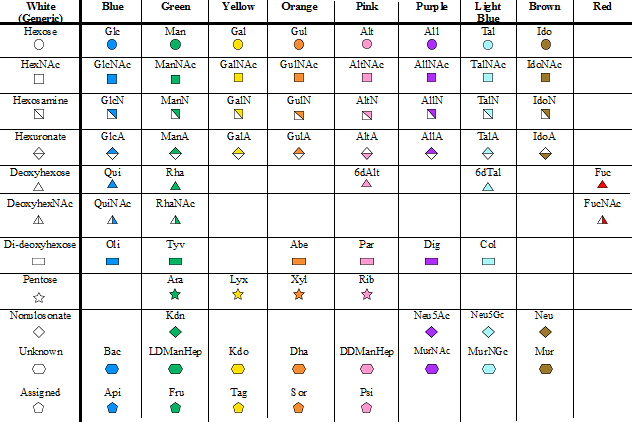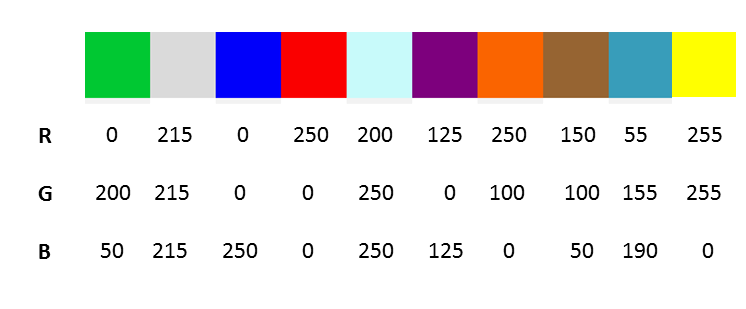Content
The Picture Dictionnary of Monosaccharide Symbols offers the pictorial representation of an extended series of monosaccharides. Each symbol follows the accepted rules in terms of shape and colors. Images of the symbols at the png format can be downloaded. Prepared lmages (png format) of glycosidic linkages is also provided.to be included in the representation of complex glyco-macro-(molecules). A list of the most common substituents is also available to be used when needed, along with the colour coding used throughout the Picture Dictionnary.
The order of presentation is as follows:
- Hexoses and Substituted
- HexNAc and Substituted
- Hexosamines and Substituted
- Hexuronates and Substituted
- Deoxyhexoses and Substituted
- DeoxyhexoseNAc
- Pentoses and Substituted
- Deoxypentoses and Substituted
- Nonulosonate
- Various
- Miscellaneous
Background
The representation of monosaccharides as symbols is becoming more than a common practice in the field of Glycobiology. This is the result of a concerted effort of glycoscientists and the increasing reference to the textbook “Essential of Glycobiology”. Historically, it was engendered by an evaluation of widely used symbol nemenclature originally put forth by Stuart Kornfeld. The symbol notation was extended: first to describe the structure of pathogen polysaccharides (Berger et al.,) and second in a previous version of the Glycopedia chapter (The Monosaccharide Representation in the age of Glycobiology) to account for the occurrence of monosaccharide units found in other kingdoms.
Following these steps, a further extension of the representation has been set forward in the context of the Third Edition of “Essential of Glycobiology” as shown below.
- To ensure harmony with prior publications, no changes were made to the 2nd. Edition symbol set.
- Shapes and colors are internally consistent only for Hexoses, Hexosamines, HexNAcs and Hexuronates.
- Shapes are consistent for Nonulosonates, Deoxyhexoses and Pentoses.
- D and L configurations, pyranose versus furanose, and ring conformations are not represented and commonest versions are assumed. Less common configurations need to be stated in the figure legend.
- The hexagon is flat because the regular hexagon might look too similar to a circle.
- Abbreviations for modifications will also follow the 2nd. Edition symbol set, with additions as needed.
- Monosaccharides not represented in this table can be shown with a Pentagon and a letter inside, defined in the figure legend
Hexoses and Substituted
HexNAc and Substituted
Hexosamines and Substituted
Deoxypentoses and Substituted
Nonulosonate

